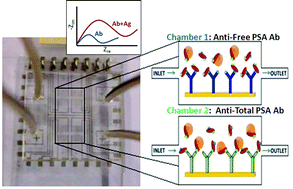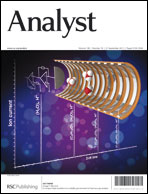Prostate cancer affects a large part of the western male population. The need for an early and accurate detection is thus a great challenge in common clinical practice, but the lack of specificity of the serum marker PSA (Prostate Specific Antigen) is a serious problem since its increased concentration can be related to several abnormalities. PSA, however, is found in serum in both a free and a complexed form with other proteins and the percentage amount of unbound PSA (the free-to-total PSA ratio) can be employed to distinguish prostate cancer from benign prostatic conditions, and also to predict the future risk of prostate cancer. To improve the operating characteristics of current PSA tests and to provide a clinical tool able to run label-free and sensitive analysis, we thus developed a biosensing platform based on Electrochemical Impedance Spectroscopy (EIS), which allows the contemporary detection of free and total PSA on a single biochip, enabling a quick screening for the risk of prostate cancer thanks to the presence of two different immobilized antibodies specific for the different antigens researched.

You have access to this article
 Please wait while we load your content...
Something went wrong. Try again?
Please wait while we load your content...
Something went wrong. Try again?


 Please wait while we load your content...
Please wait while we load your content...